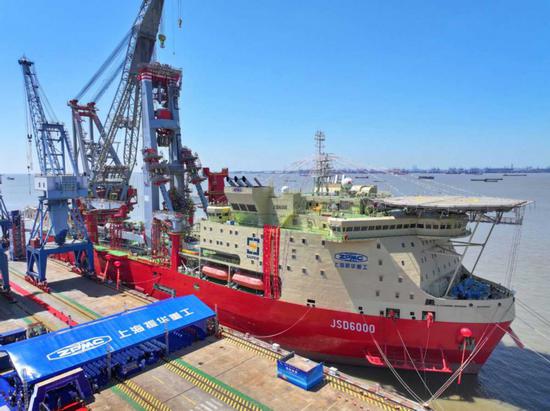
JSD6000 Derrick Pipelay, a deepwater lifting and pipe-laying vessel developed by Shanghai Zhenhua Heavy Industries, is berthed at a port in Shanghai on Tuesday. (XU CONGJUN/FOR CHINA DAILY)
Shanghai Zhenhua Heavy Industries completed its deepwater lifting and pipe-laying vessel in Shanghai on Tuesday, marking a significant breakthrough in offshore engineering.
The vessel, among the most advanced globally, is part of Zhenhua's strategy to further expand its global market presence.
The new vessel — JSD6000 Derrick Pipelay— can lay pipes of diameters ranging from 6 to 60 inches, carrying out such operations in shallow, deep or ultra-deep waters. It can efficiently and safely install offshore oil and gas pipelines in oceanic depths of up to 3,000 meters.
"The completion of JSD6000not only highlights China's capacity in marine engineering equipment but also signifies the country's progress in accelerating the development of new production capabilities," said You Ruikai, chairman of Shanghai Zhenhua Heavy Industries.
The vessel is expected to significantly enhance deep-sea pipe-laying operations and bolster marine exploration and development capabilities, providing critical support for the strategic construction of a robust transportation and manufacturing sector, You added.
Founded in 1992, Zhenhua is the world's largest manufacturer of port equipment and the top provider of automated terminal system solutions. The company has focused on high-end, smart and green production, it said.
In 2023, its revenue grew 9.08 percent year-on-year to 32.9 billion yuan ($4.53 billion), with net profit surging 39.8 percent to 520 million yuan, according to its earnings report.
Zhenhua operates six production bases across China with over 20 vessels capable of delivering entire products to ports worldwide.
Since its inaugural venture in Vancouver, Canada in 1992, Zhenhua has developed its business to the global market and has expanded rapidly, with its products covering about 350 terminals across 107 countries and regions. Bolstered by a network of eight regional hubs and 31 overseas branches, and boasting 93 percent localization, the company's overseas operations contribute over 50 percent to its revenue, according to the company.
Zhenhua's container cranes have enjoyed a 70 percent global market share since 2008. Over 90 percent of container cranes on the east and west coasts of the United States have been developed by Zhenhua, while the top 100 container throughput ports worldwide rely on its port equipment.
Innovation lies at the heart of Zhenhua, epitomized by its Design Research Institute, housing over 1,600 professionals.
The institute has developed more than 50 world firsts, including a dual 40-foot container crane and a 12,000-ton self-propelled full-rotation crane ship.
With a focus on its core operations, Zhenhua is optimizing digital tools to facilitate traditional terminals, infusing them with cutting-edge intelligent technologies. Its involvement in over 70 percent of the world's automated terminals has shown its status as the top provider of automated terminal solutions globally, said Yan Feng, deputy Party secretary of the Changxing unit of Shanghai Zhenhua, exemplified by businesses ranging from Phase 1 in Qingdao, Shandong province, to Port of Vado Ligure in Italy.
The collaboration between Zhenhua and Shanghai's Yangshan Port's automated terminal stands as an example of technological advancement, drawing large vessels to the bustling shores of the megalopolis, said Yan.
Yan said Zhenhua's impact extends beyond established ports like Shanghai, playing a major role in major maritime hubs such as Tianjin, Guangzhou and Shenzhen of Guangdong province and Qinzhou, Guangxi Zhuang autonomous region, thus catalyzing local economic growth.
Zhenhua's rise mirrors Shanghai's aspirations to emerge as a global center of scientific and technological innovation, a leading shipping hub and a modern maritime metropolis.
In 2023, Shanghai's shipbuilding capacity soared, with an output surpassing 6.6 million metric tons, buoyed by a total annual output value exceeding 100.71 billion yuan, marking a year-on-year surge of about 8.7 percent.


























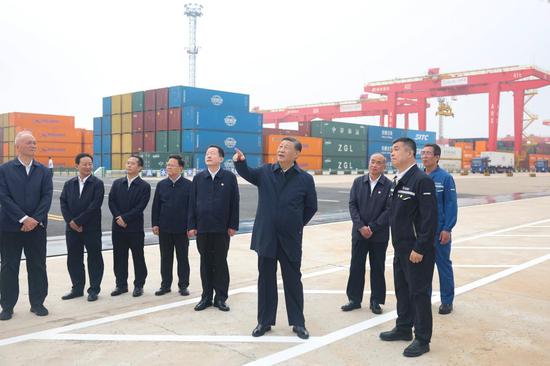



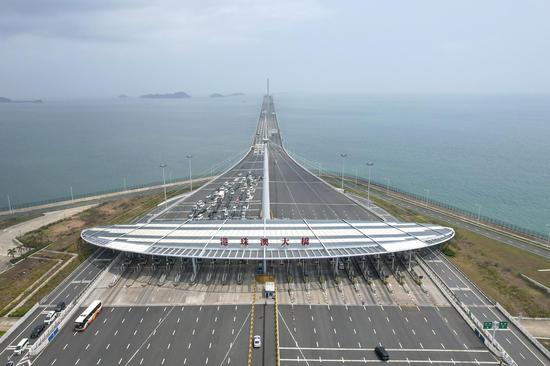



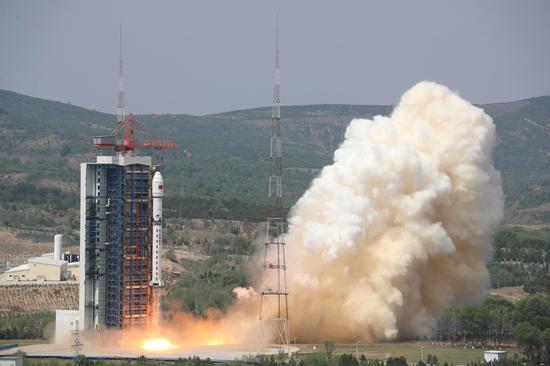







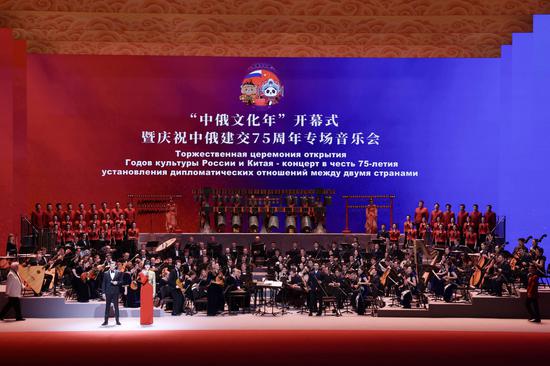







 京公网安备 11010202009201号
京公网安备 11010202009201号